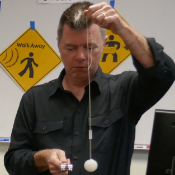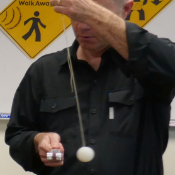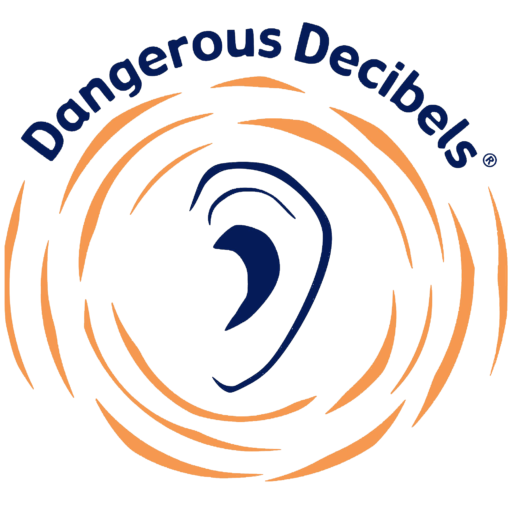Tuning Fork and Ping Pong Ball
 This activity has the same reminders as the first tuning fork activity in terms of how to use a tuning fork correctly. Your kit has 4 ping-pong balls already made for you to use. It does take practice, even for you as the instructor, to get the correct placement of the tuning fork against the ping-pong ball for the SOUND ENERGY to be transferred to the ping-pong ball. Here are the instructions for how to make this demonstration:
This activity has the same reminders as the first tuning fork activity in terms of how to use a tuning fork correctly. Your kit has 4 ping-pong balls already made for you to use. It does take practice, even for you as the instructor, to get the correct placement of the tuning fork against the ping-pong ball for the SOUND ENERGY to be transferred to the ping-pong ball. Here are the instructions for how to make this demonstration: 1. Hold the string so that the ball dangles about 18 inches from your hand. For young students, the string may need to be cinched up to about 12 inches depending on how long their arms are. First just let the ping-pong ball dangle and touch the side of the tuning fork tine (without striking) to the ball. Nothing happens.
1. Hold the string so that the ball dangles about 18 inches from your hand. For young students, the string may need to be cinched up to about 12 inches depending on how long their arms are. First just let the ping-pong ball dangle and touch the side of the tuning fork tine (without striking) to the ball. Nothing happens.
2. Next, strike the tuning fork and then gently touch the ball again with the side of the vibrating tuning fork tine. If you line this up properly the ping-pong ball will go flying away from the tuning fork. Avoid batting the ball with the tuning fork.
Note: this is the activity that most students want to try out for themselves. So, if there is time at the end of the program, you can let other students try it out. Just reinforce the messaging along with the activity: SOUND HAS ENERGY and is powerful enough to move a ping-pong ball. Remember to emphasize that the it is the POWER in the sound vibrations that can damage our ears.
Advanced Techniques:
Even if you have enough tuning forks (226 Hz) for everyone in the class IT IS NOT ADVISABLE to try to do the ping-pong ball activity with the entire class. It turns out to be way too chaotic and you won’t be able to support all the students at the same time since some of them will master the skill quicker and easier than others. The most we recommend is 5 students up at the front of the class alongside the instructor (6 tuning forks and 6 ping-pong balls with string attached).
Again, it is important to watch your clock and make sure not to exceed the allotted time for both tuning fork activities in this module (5 minutes).
